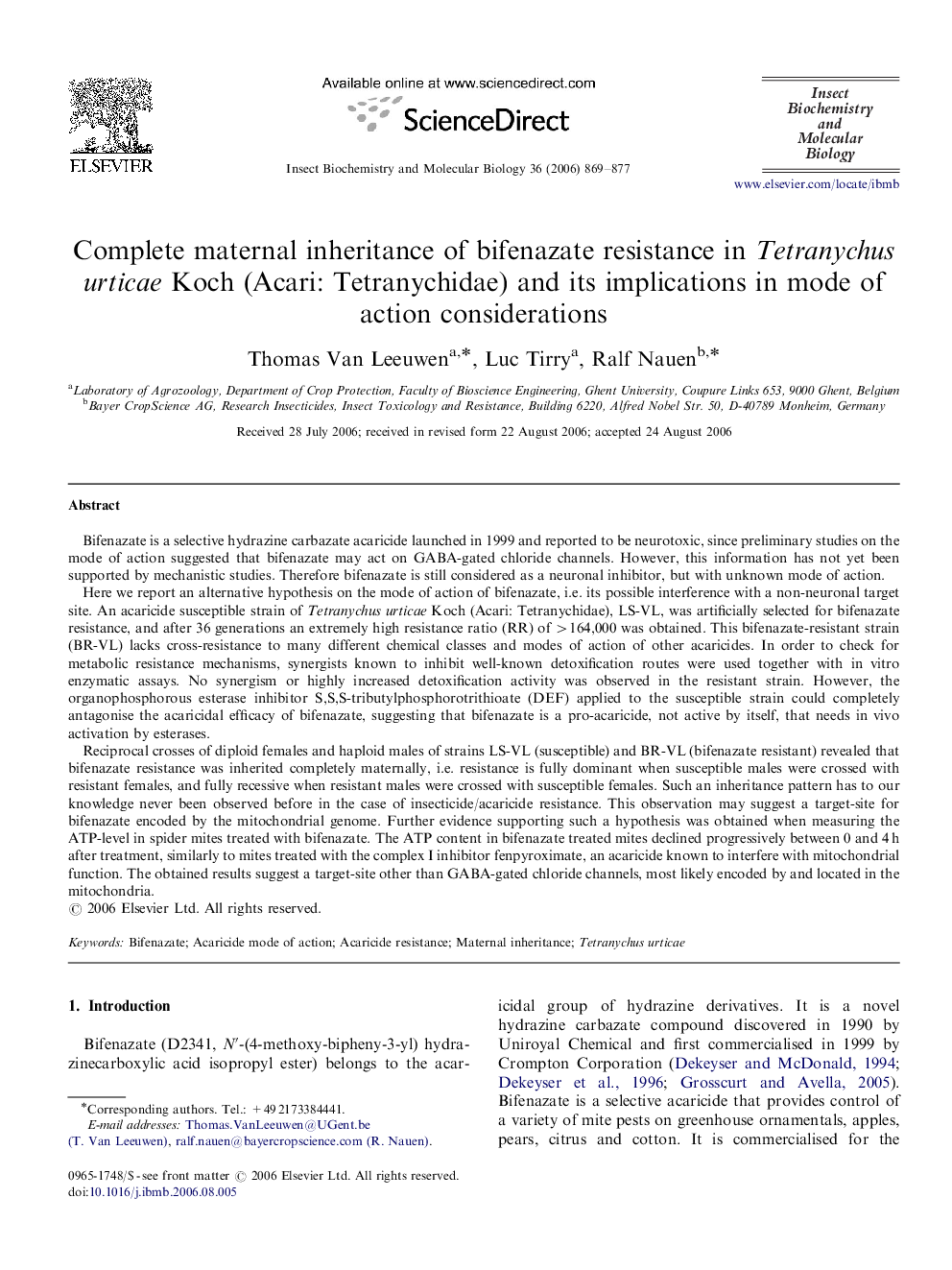| کد مقاله | کد نشریه | سال انتشار | مقاله انگلیسی | نسخه تمام متن |
|---|---|---|---|---|
| 1983178 | 1062349 | 2006 | 9 صفحه PDF | دانلود رایگان |

Bifenazate is a selective hydrazine carbazate acaricide launched in 1999 and reported to be neurotoxic, since preliminary studies on the mode of action suggested that bifenazate may act on GABA-gated chloride channels. However, this information has not yet been supported by mechanistic studies. Therefore bifenazate is still considered as a neuronal inhibitor, but with unknown mode of action.Here we report an alternative hypothesis on the mode of action of bifenazate, i.e. its possible interference with a non-neuronal target site. An acaricide susceptible strain of Tetranychus urticae Koch (Acari: Tetranychidae), LS-VL, was artificially selected for bifenazate resistance, and after 36 generations an extremely high resistance ratio (RR) of >164,000 was obtained. This bifenazate-resistant strain (BR-VL) lacks cross-resistance to many different chemical classes and modes of action of other acaricides. In order to check for metabolic resistance mechanisms, synergists known to inhibit well-known detoxification routes were used together with in vitro enzymatic assays. No synergism or highly increased detoxification activity was observed in the resistant strain. However, the organophosphorous esterase inhibitor S,S,S-tributylphosphorotrithioate (DEF) applied to the susceptible strain could completely antagonise the acaricidal efficacy of bifenazate, suggesting that bifenazate is a pro-acaricide, not active by itself, that needs in vivo activation by esterases.Reciprocal crosses of diploid females and haploid males of strains LS-VL (susceptible) and BR-VL (bifenazate resistant) revealed that bifenazate resistance was inherited completely maternally, i.e. resistance is fully dominant when susceptible males were crossed with resistant females, and fully recessive when resistant males were crossed with susceptible females. Such an inheritance pattern has to our knowledge never been observed before in the case of insecticide/acaricide resistance. This observation may suggest a target-site for bifenazate encoded by the mitochondrial genome. Further evidence supporting such a hypothesis was obtained when measuring the ATP-level in spider mites treated with bifenazate. The ATP content in bifenazate treated mites declined progressively between 0 and 4 h after treatment, similarly to mites treated with the complex I inhibitor fenpyroximate, an acaricide known to interfere with mitochondrial function. The obtained results suggest a target-site other than GABA-gated chloride channels, most likely encoded by and located in the mitochondria.
Journal: Insect Biochemistry and Molecular Biology - Volume 36, Issue 11, November 2006, Pages 869–877